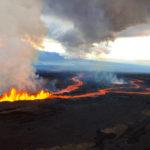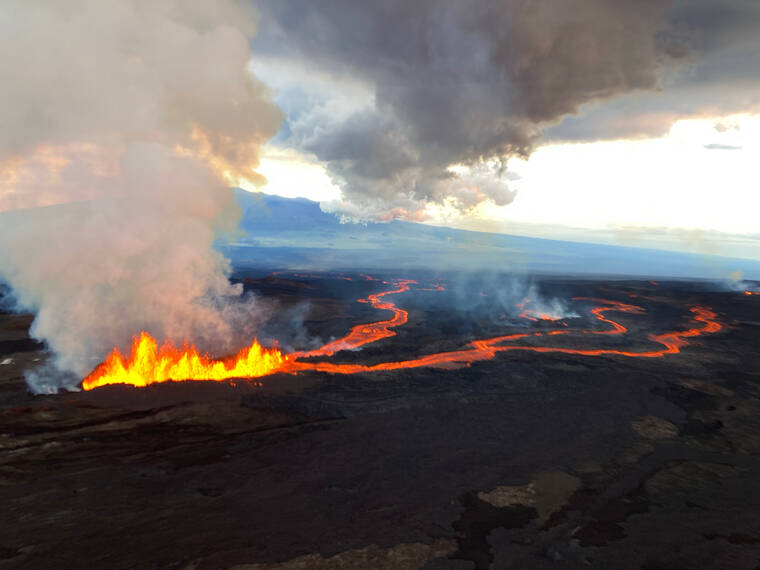Northeast Rift Zone eruption of Mauna Loa continues

The Northeast Rift Zone eruption of Mauna Loa continues, with two active fissures feeding lava flows downslope, the Hawaiian Volcano Observatory reported Wednesday morning.
The fissure 3 lava flows are traveling to the northeast, though the direction shifted slightly westward overnight, still moving toward Daniel K. Inouye Highway, also known as Saddle Road. Fissure 3 is the dominant source of the largest lava flow, and the flow front is about 3.6 miles (5.8 km) from Saddle Road as of 7 a.m. Wednesday.
The flows have been advancing at a rate of 0.08 miles per hour (130 meters per hour) over the last day, but they are approaching a relatively flat area and will begin to slow down, spread out, and inflate. Forecasts indicate it may take two days for lava flows to reach the highway.
Fissure 4 is still active with lava flows moving toward the northeast at 0.03 miles per hour (50 meters per hour). A small lobe is moving to the east from fissure 4 at a slower rate than the main lobe. Volcanic gas plumes are lofting high and vertically into the atmosphere. Pele’s hair (strands of volcanic glass) is falling in the Saddle Road area.
Seismic monitoring detects tremor (high rates of earthquakes) in the location of the currently active fissures. This indicates that magma is still being supplied, and activity is likely to continue as long as we see this signal.
There is no active lava within Moku’aweoweo caldera, and the Southwest Rift Zone is not erupting. The observatory said scientists do not expect any eruptive activity outside the Northeast Rift Zone. No property is at risk currently.


